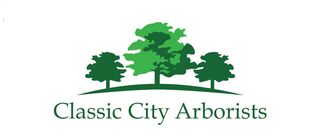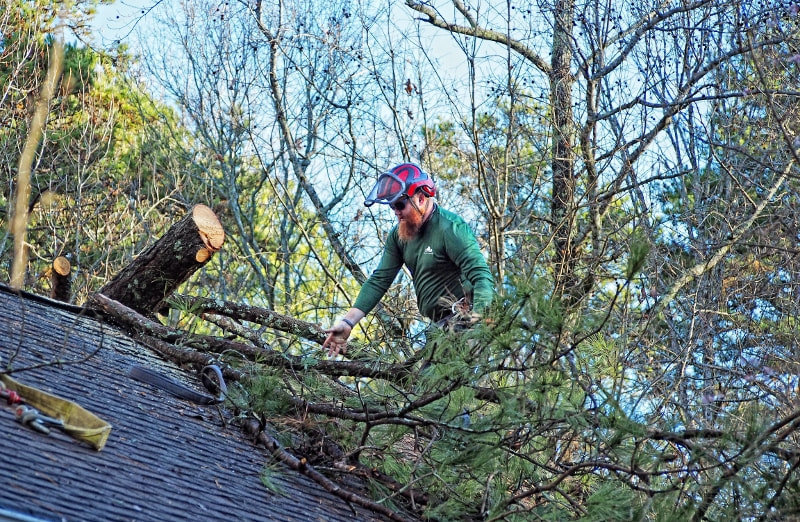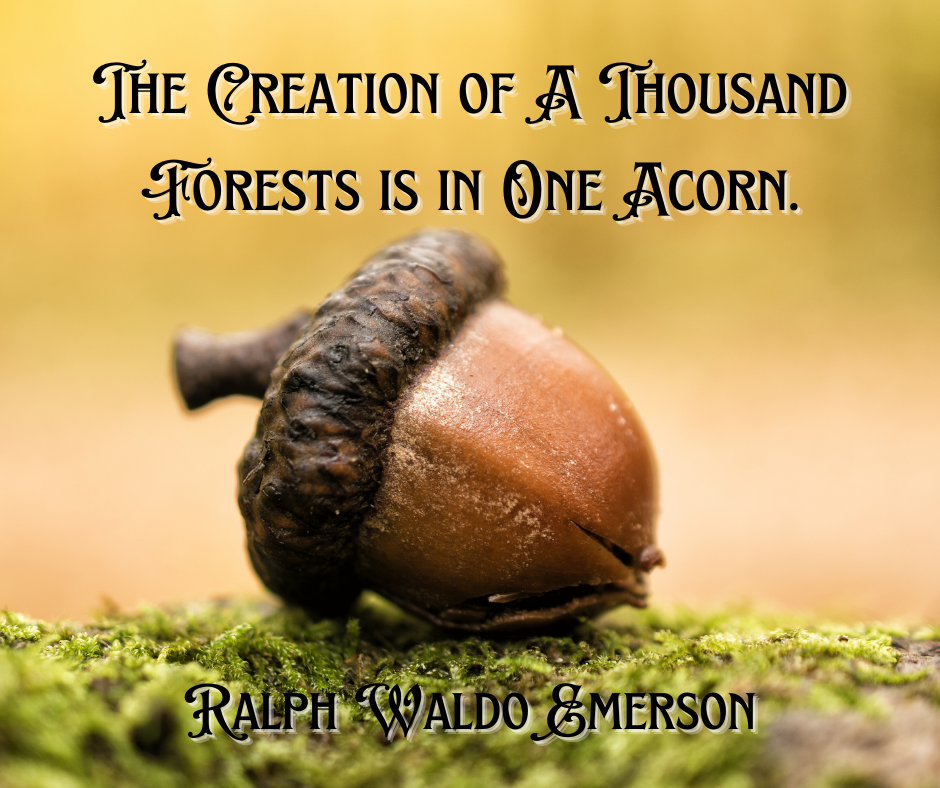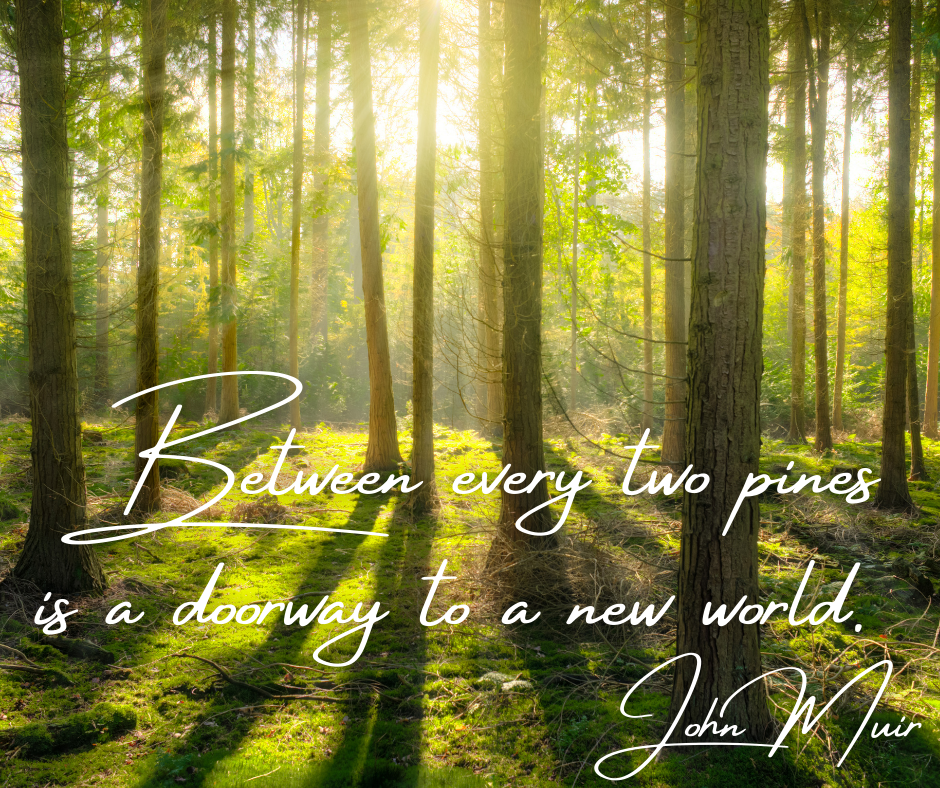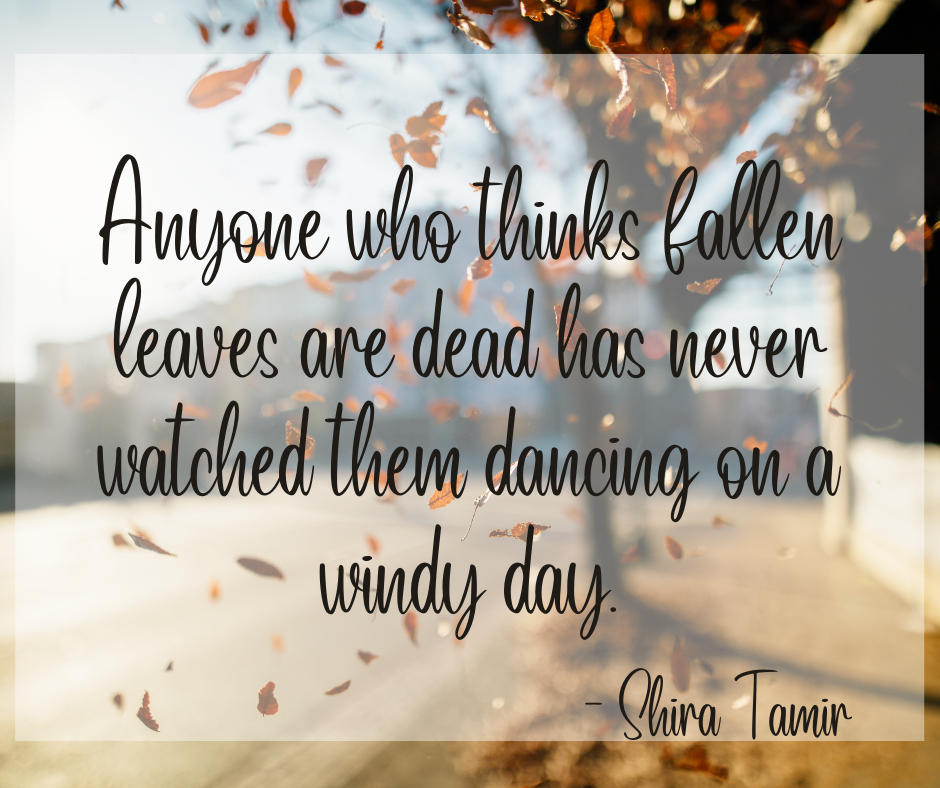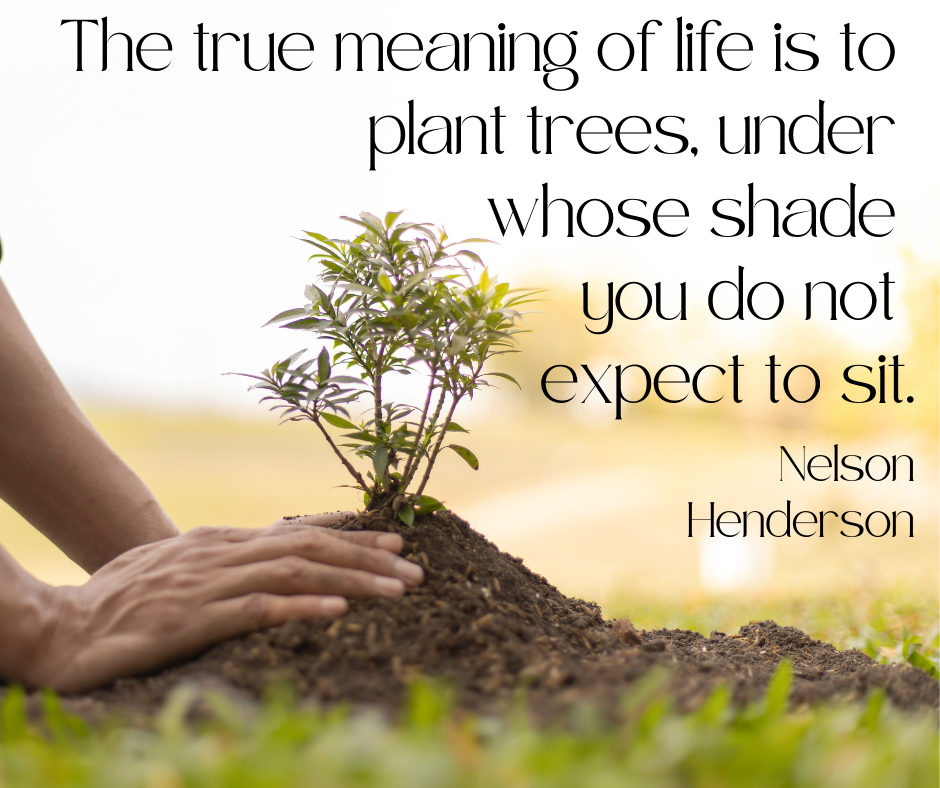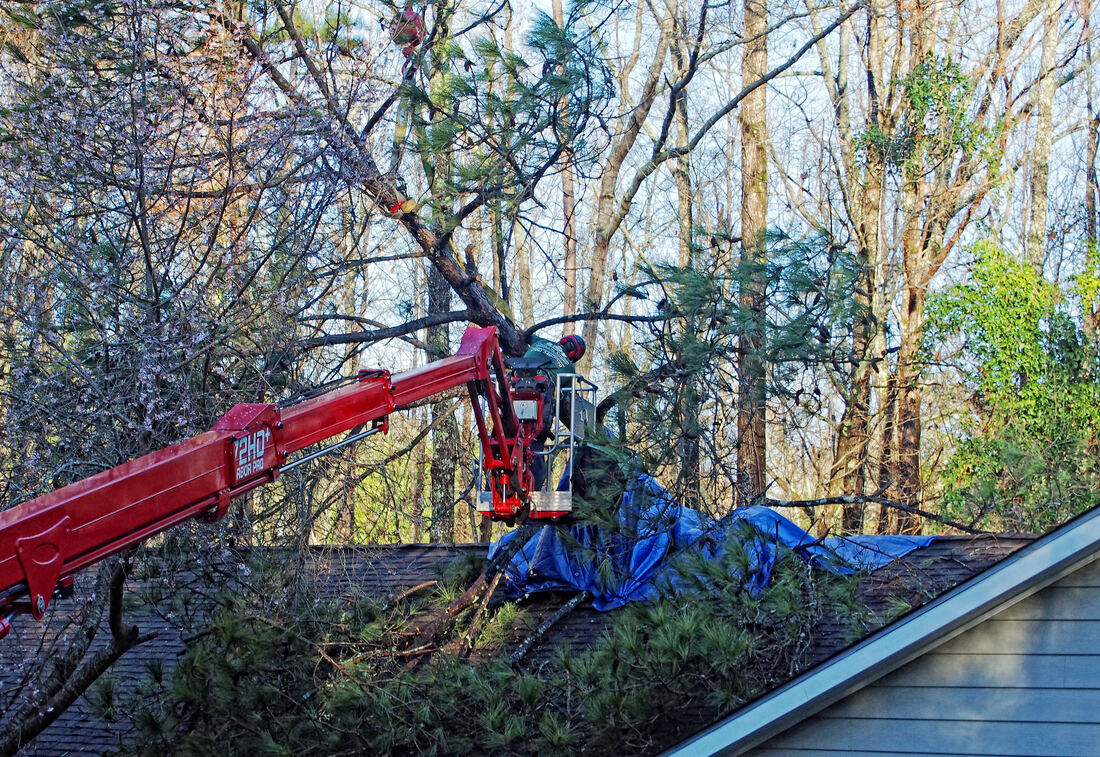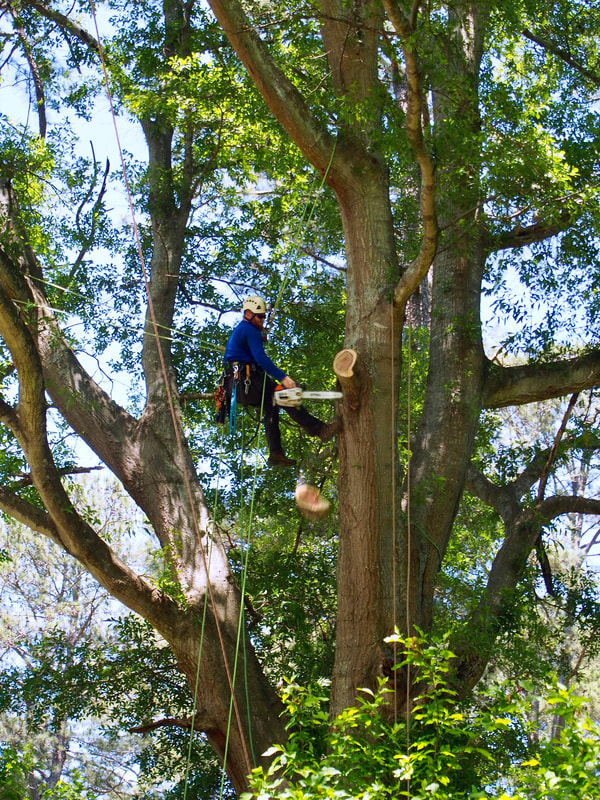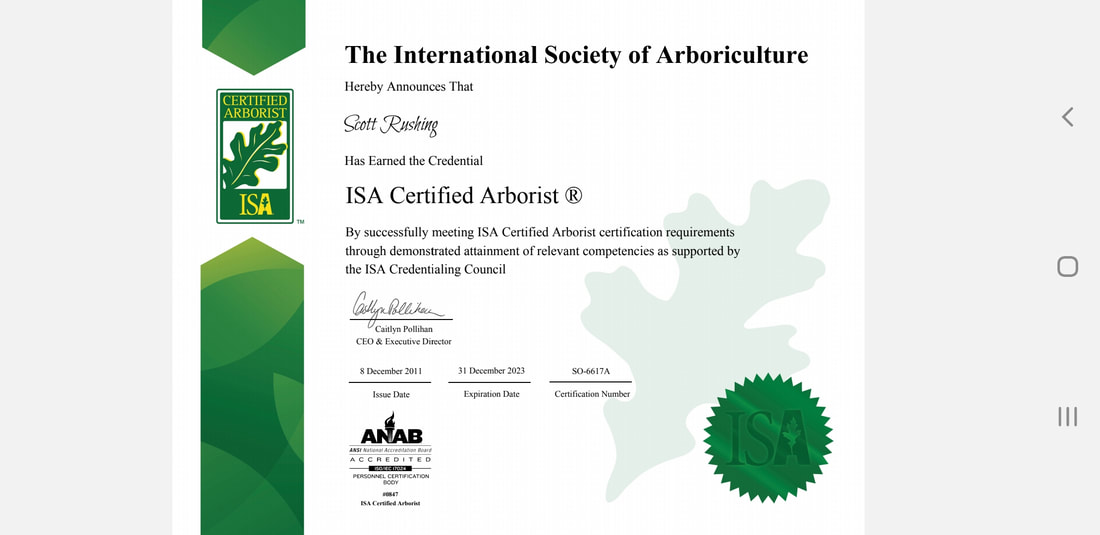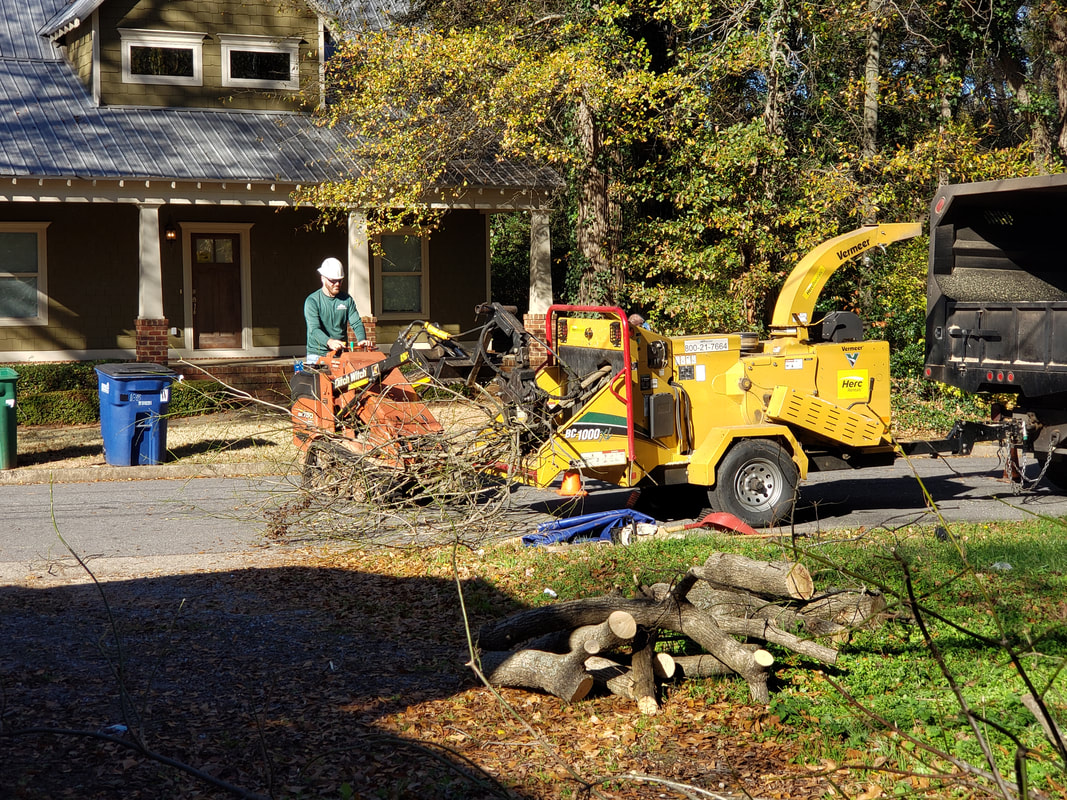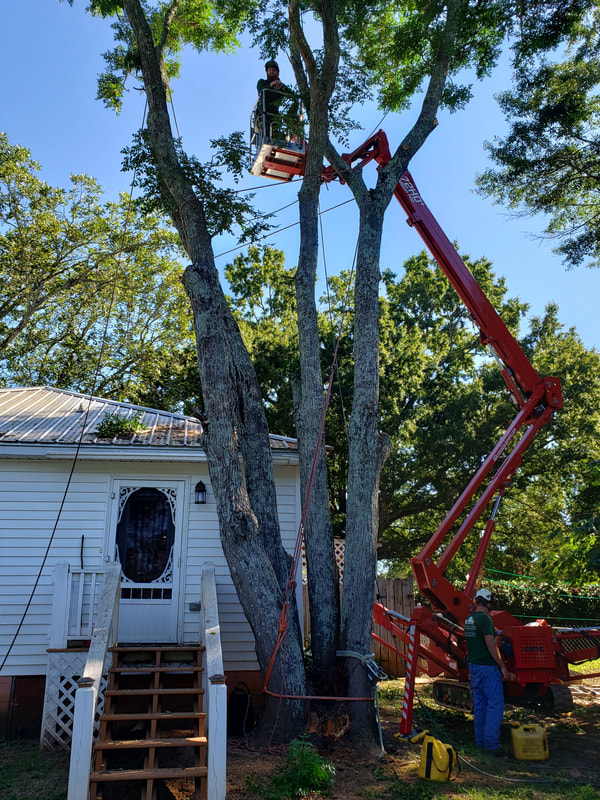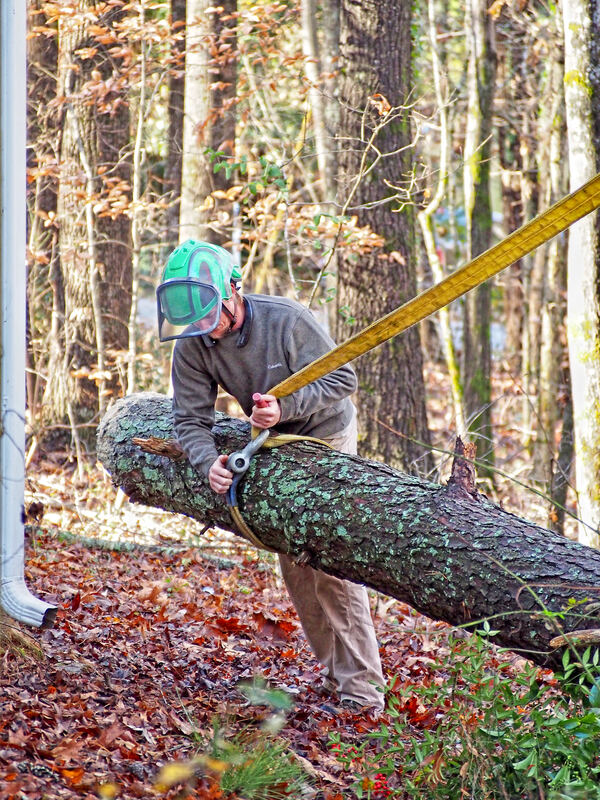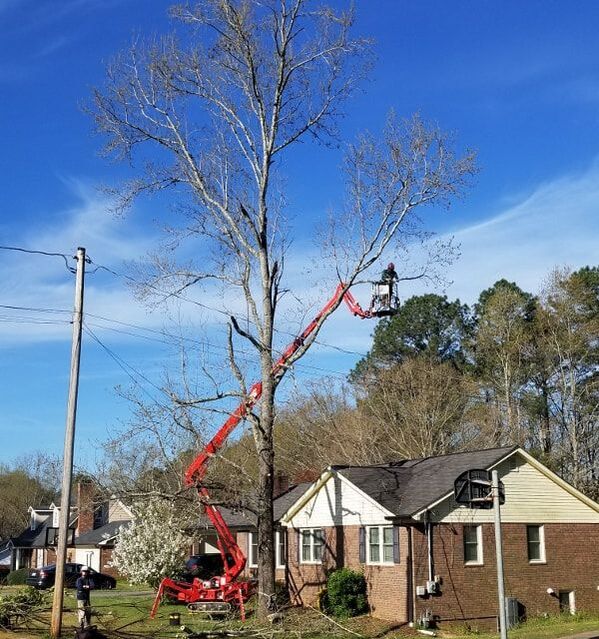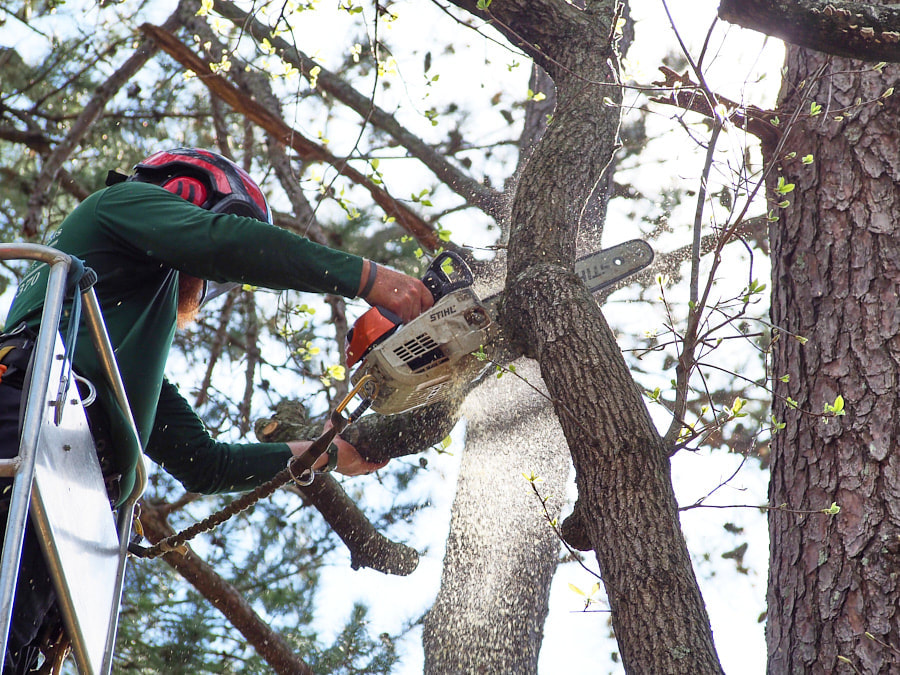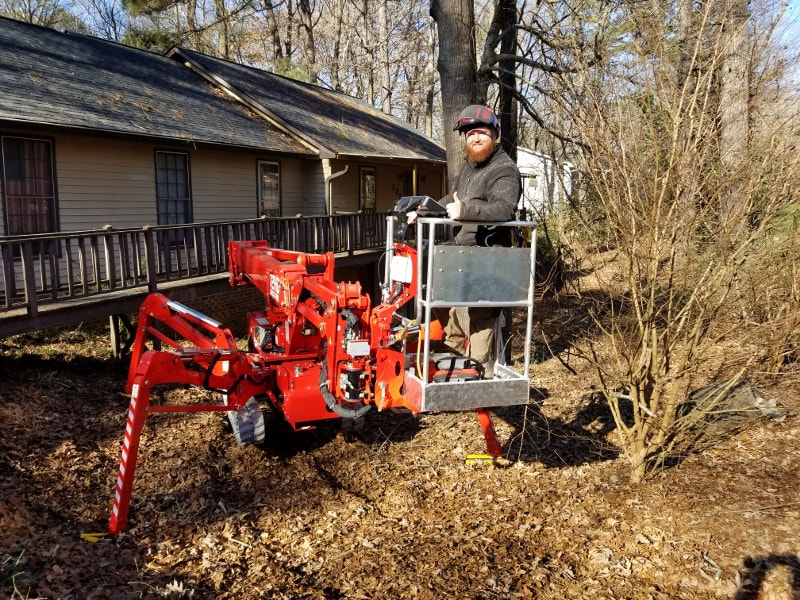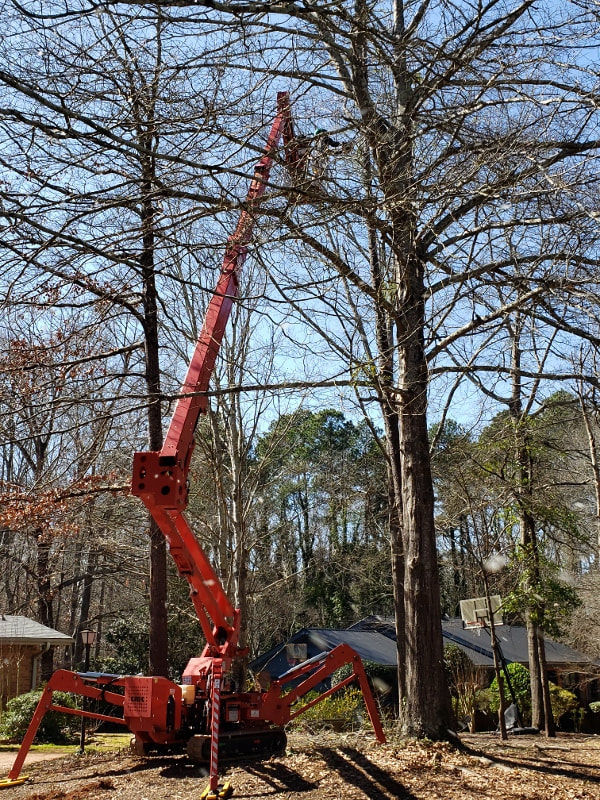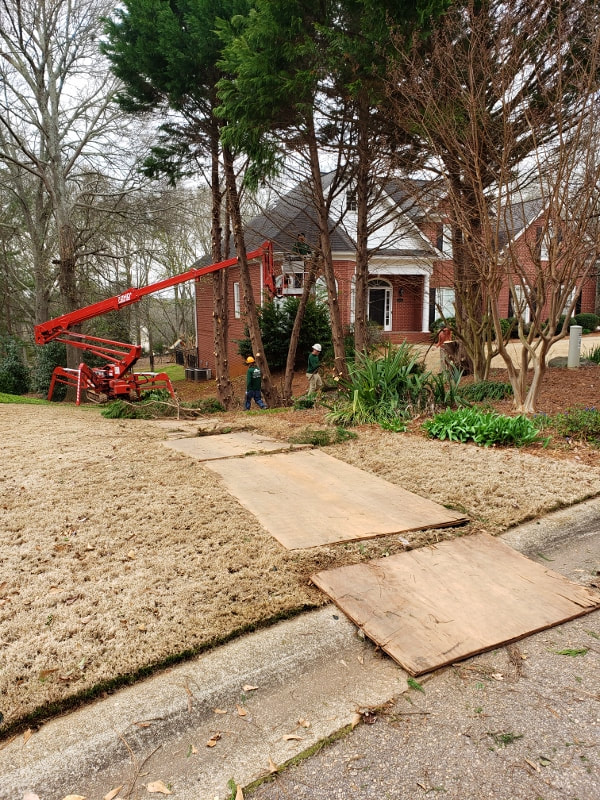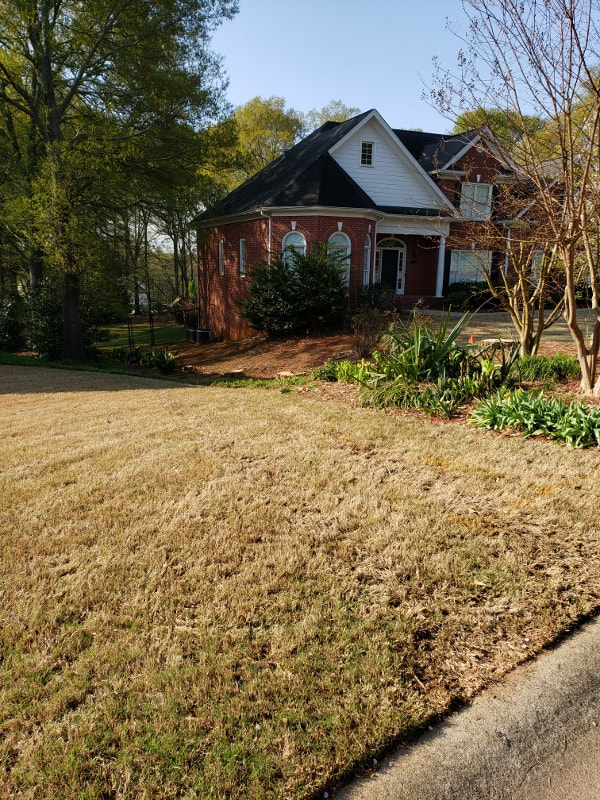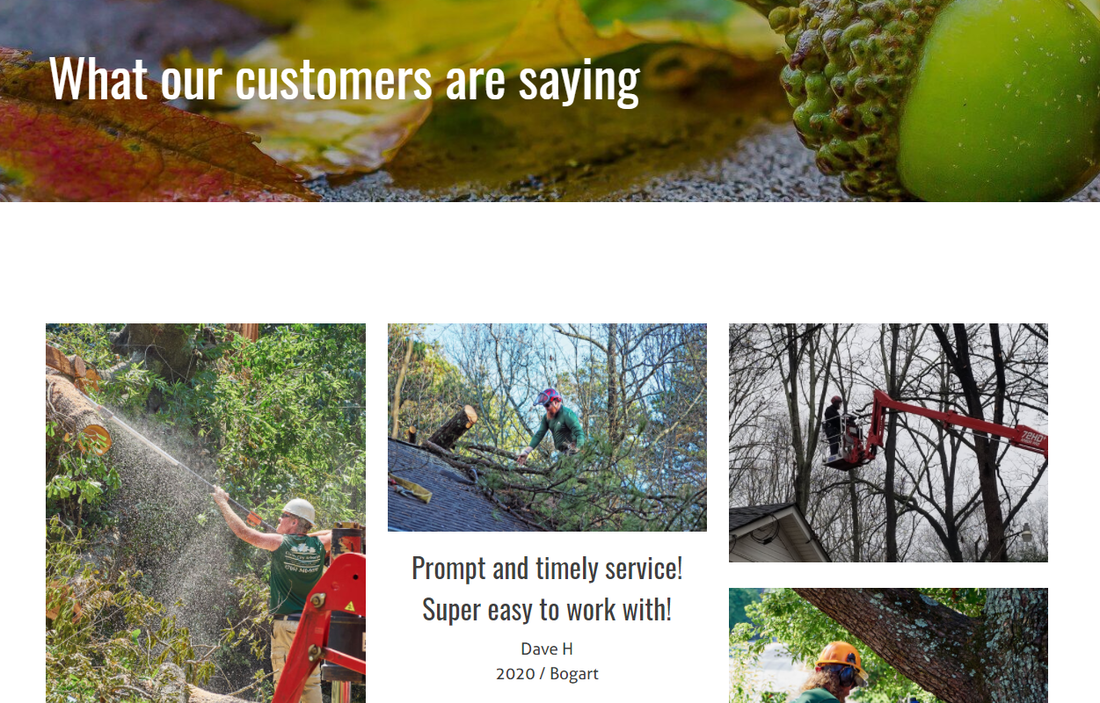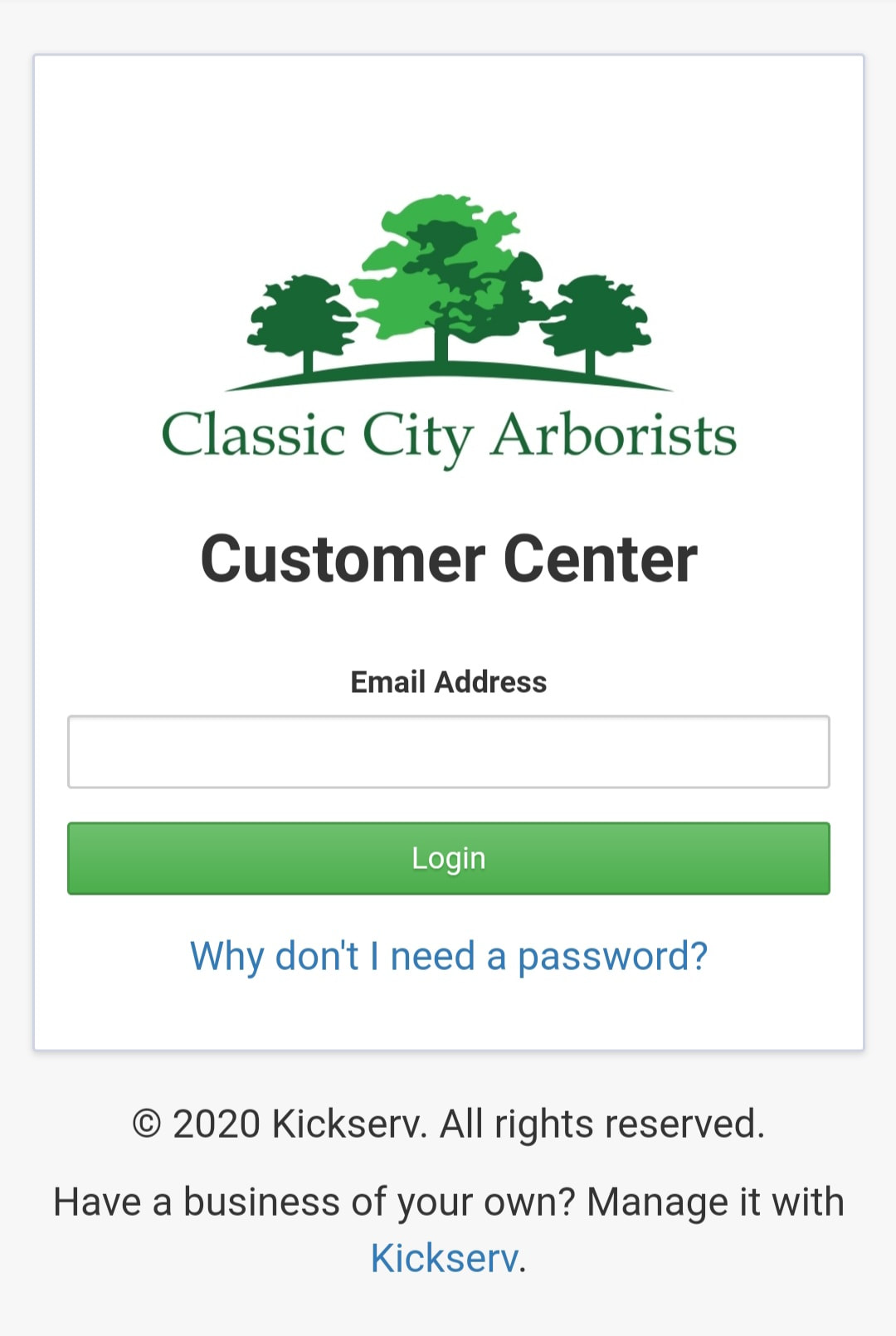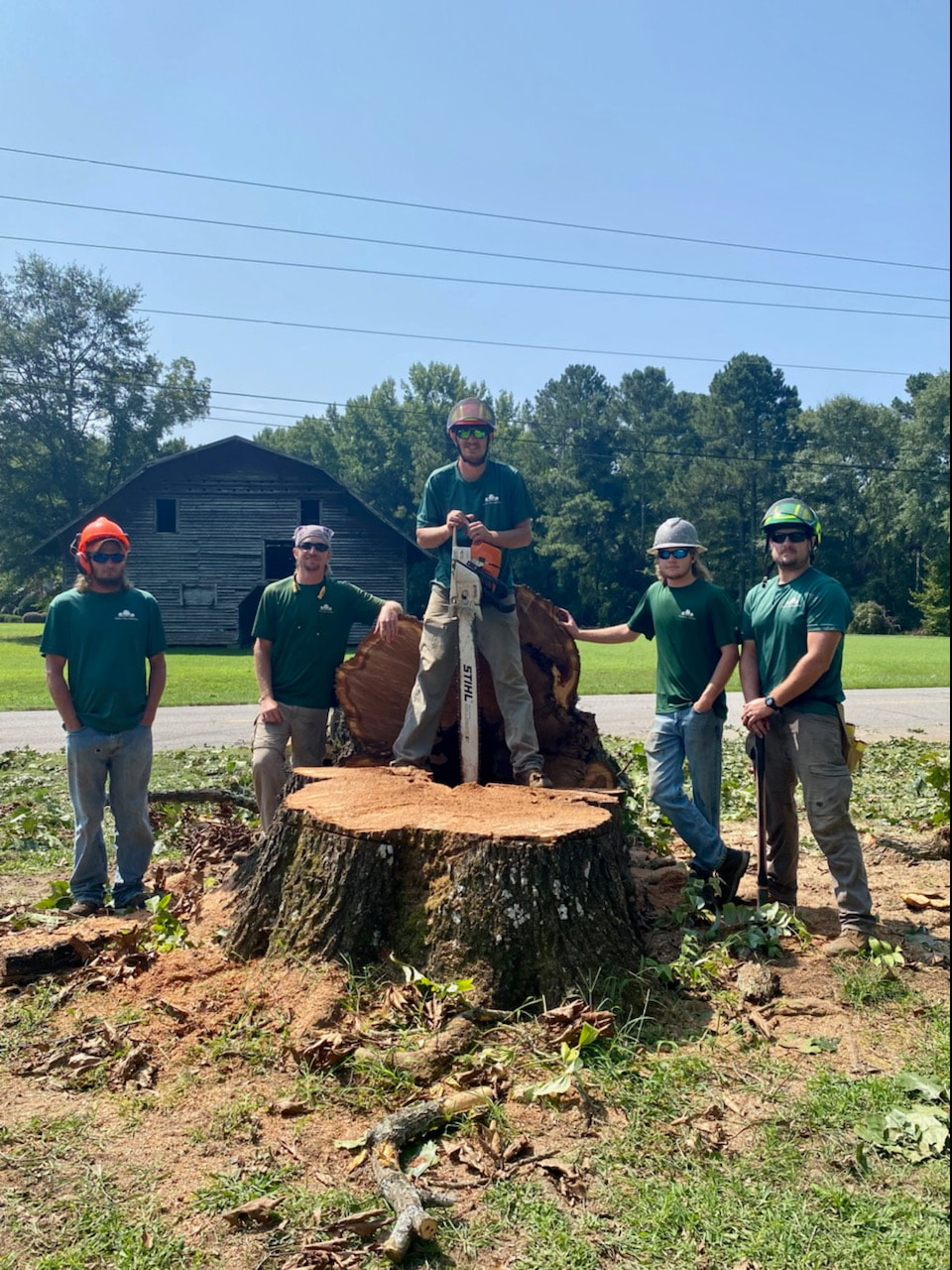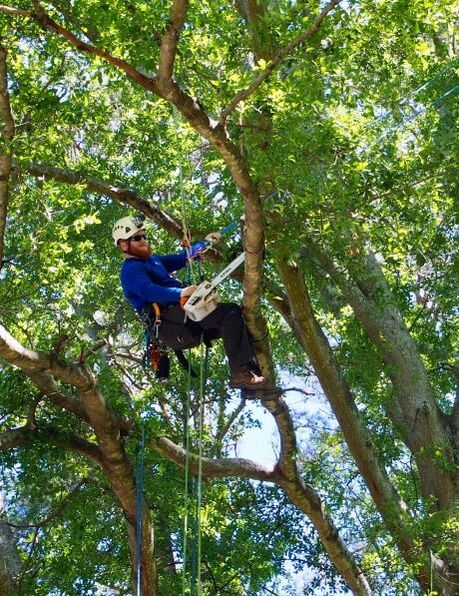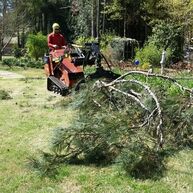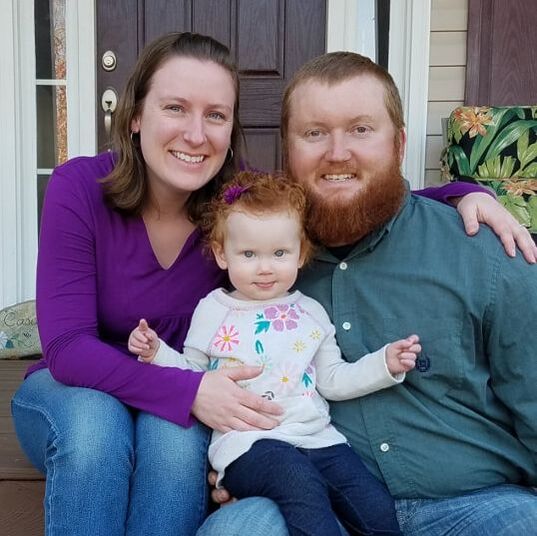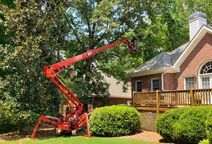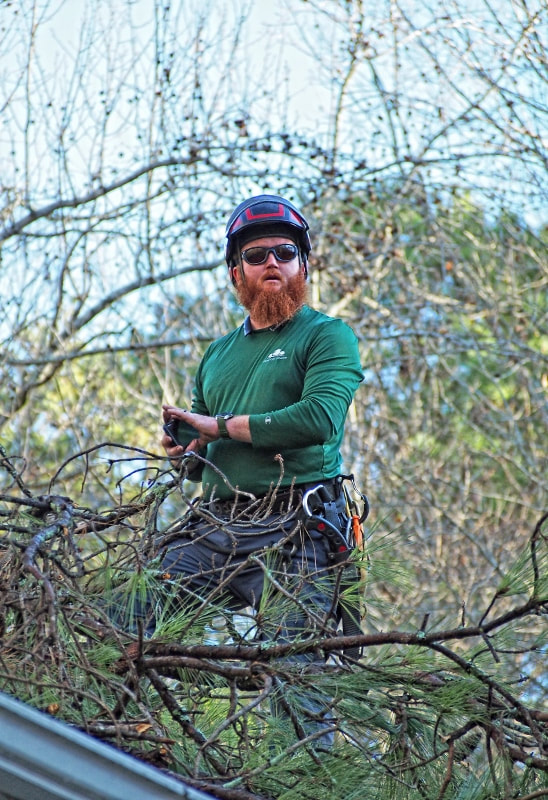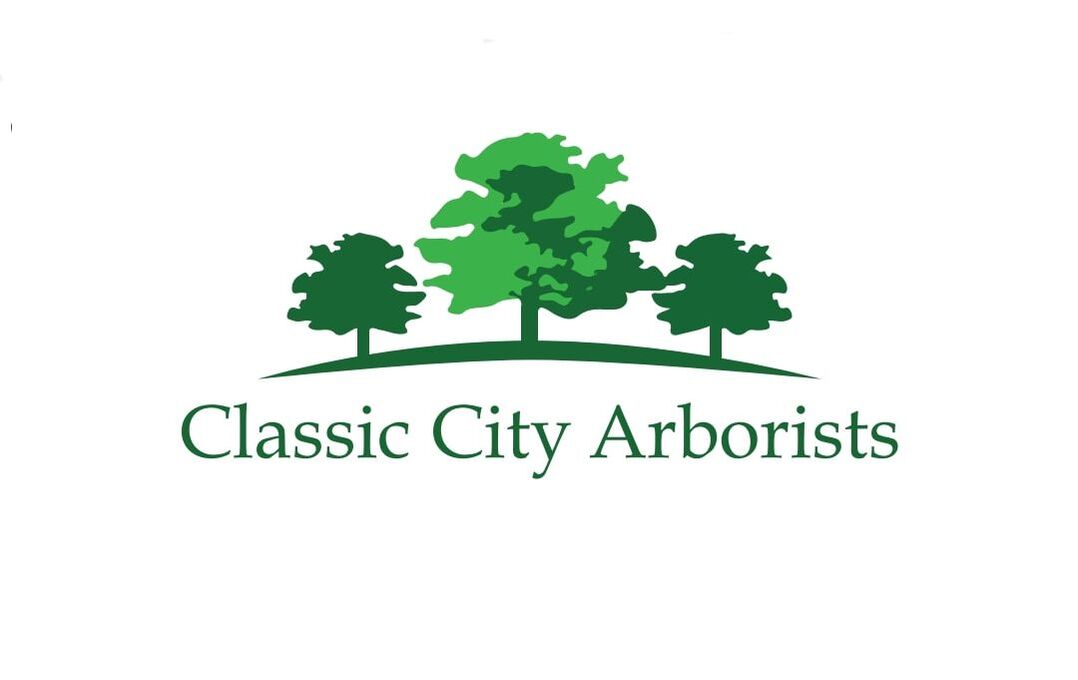|
News and Blog Articles
|
|
Tree ownership sounds like a fairly clear-cut concept. If the tree is on your property, it’s yours, and if it’s not on your property, then it’s not yours. But what if the tree sits half on your property, and half on your neighbor’s? Or what if it’s on your neighbor’s side of the property line, but its branches stretch over onto your land? Even worse, what happens when a tree falls down and causes damage? If it wasn’t your tree, are you still liable for the hole in your roof? Let’s walk through the possible scenarios: Scenario 1A tree growing entirely on your property is unequivocally yours. If you want to cut it down, prune it, or otherwise tend to it, then you don’t need anyone’s permission but your own. Scenario 2A tree that grows on your property but has branches overhanging your neighbor’s property is a little more complicated. The branches that overhang onto your neighbor’s land technically belong to your neighbor, which means you both have legal claim to the tree. Scenario 3A tree whose trunk sits partly on your property and partly on your neighbor’s property belongs to both parties. If any percentage of the trunk sits across the property line, then tree ownership essentially splits 50/50. How does this affect the tree work I want done? If you’re looking to cut down or trim a tree that fits scenario 1, then you’re good to go! It’s your tree, and you can do what you’d like with it. If you want to do work on a tree that’s scenario 2, it depends on the work. If you want to trim some branches on your side of the property line, then you don’t technically need to confer with your neighbor – though here at Classic City Arborists, we would encourage you to do so, just to prevent any conflict later on. However, if you have a tree that fits scenario 2 and you want to trim the branches that overhang your neighbor’s property, or you want to remove the tree entirely, you will likely need to talk to your neighbor to get their permission. Not all arborists or tree companies will require this, but here at Classic City Arborists, we would need your neighbor to sign a waiver granting us permission to work on the tree, since it does overhang their property. This helps prevent legal ramifications for both us and you. If your tree fits scenario 3, then no matter what work you want done on it, you should definitely talk to your neighbor, because the entire tree partially belongs to them, not just a few branches. At Classic City Arborists, we’d need them to sign a waiver, though again, not all tree companies will require this. What happens when a tree falls and causes damage?Trees can get pretty big, and as they say – the larger they are, the harder they fall. Whether due to internal rot, infestation, or inclement weather, tree failure (and the subsequent damage) is an unfortunate reality. In the State of Georgia, any damage caused by a fallen tree is the responsibility of whoever owns the land the tree fell on, with a few exceptions. This means that, in most cases, if a tree falls on your property and damages your home or your vehicle, it doesn’t matter where it was growing; you’re liable for the damage. On the other hand, if one of your trees falls and damages your neighbor’s home, since it fell on their property, the damage would be their responsibility, not yours. This also means that, if a tree falls partially on your property and partially on your neighbors, then each of you would be responsible for the part of the tree and the damage on your own property. Say your neighbor’s tree fell across their fence and your shed. Your neighbor would be responsible for fixing their own fence, and you would be responsible for fixing your own shed. In a situation like this, we would recommend working together with your neighbor to hire a single arborist to complete the work, and have them split the cost between the two of you. Doing all the work at once will likely be cheaper than if you both hire separate companies to do only part of the work. The Exception to the RuleThere is one notable exception to the rule of responsibility: if the tree in question showed signs of failure prior to falling, and the tree owner was both aware of these signs and did nothing about it, the situation becomes a case of negligence, and the liability for the damage falls to the tree owner. For example, say a Certified Arborist came out and told you that your tree was rotting and may fall, and wrote you a quote for removing it, but you didn’t choose to have that work done. Then, the tree falls and damages your neighbor’s property, be it their land, home, car, etc. Since you were aware of the danger and did nothing, the damage becomes your responsibility. This exception is hard to prove, however, as you need evidence. While your neighbor may have a picture of the obviously sick tree before it fell, it can be difficult to prove that you knew about this sickness. Typically, you would need evidence in writing to prove negligence. So, if there’s a tree near your home but not on your property that you’re worried about, it’s always a good idea to get a Certified Arborist to evaluate it, and then present that evaluation in writing to the tree’s owner. If they choose to do nothing about it, and the tree later falls and damages your property, you’ll have the evidence you need to hold them accountable. Similarly, if a Certified Arborist tells you one of your trees is at a high risk for failure, and that tree is near any structures (be they your own or someone else’s), it’s in your best interest to have it taken care of as soon as possible to prevent liability for damage to another’s property. AuthorEmily Casuccio is sister and sister-in-law to Rebekah and Scott Rushing, and has over half a decade of experience in copywriting, copyediting, proofreading, and developmental storyboarding. She's worked with both published and undiscovered authors on both fiction and nonfiction, and takes pride in supporting local businesses. Her passion lies in the written word and helping authors of all capacities realize their dreams and achieve their fullest potential. To learn more about her, read samples of her work, or contact her, visit her online portfolio.
0 Comments
We've talked before about the importance of trees. But here are some quotes that state how we feel much more eloquently! "One touch of nature makes the whole world kin." - William Shakespeare "All our wisdom is stored in the trees." - Santosh Kalwar "To really feel a forest canopy one must use different senses, and often the most useful one is the sense of imagination." - Joan Maloof "In a forest of a hundred thousand trees, no two leaves are alike. And no two journeys along the same path are alike." - Paulo Coelho “He that plants trees, loves others besides himself.” - Thomas Fuller “It is not so much for its beauty that the forest makes a claim upon men’s hearts, as for that subtle something, that quality of air that emanation from old trees, that so wonderfully changes and renews a weary spirit.” - Robert Louis Stevenson
One of the biggest concerns we hear from our customers is the price tag on the tree work they want done. Many people are surprised by how expensive it can be to cut down even just one little old tree, let alone something more complicated like raising a canopy or getting a downed trunk off a roof. So why is tree service so expensive? Tree Work is DangerousMost of our work is performed on compromised trees. What we do requires us to get up close and personal with failing and at-risk trees, which puts us at a heightened risk for injury. Our employees know what they’re getting into, but that doesn’t mean we don’t want to take care of them. We’re a family-owned business, and consider our employees a part of that family. To ensure everyone who works for us is protected, we maintain Worker’s Comp insurance. Should the unthinkable happen, we want our employees to know that we will take care of them. In addition to insurance, we also want our workers to be able to maintain a healthy work-life balance. We strive to provide fair compensation for the intense work this job requires, and offer paid time off and paid holidays. Training and CertificationWith such dangerous work, it’s important for everyone on the job to know what they’re doing. That means plenty of training and preparation for our employees. Scott Rushing, co-owner and Certified Arborist, maintains his certification through the International Society of Arboriculture (ISA) with continuing education courses throughout the year to ensure he’s up-to-date on all the latest tree care policies and procedures. To learn more about what it means to be a Certified Arborist, check out our article on ISA Certification. We’re Licensed and InsuredIn addition to Worker’s Comp, we also hold liability insurance to protect you, the customer. While accidents aren’t common, we want our customers to know that their property and livelihood is protected at all times when we’re on the job. To get liability insurance (and also legally be allowed to do business) we have the proper business licenses for Oconee County, Athens-Clarke County, the State of Georgia, and the United States. Tree Work is ComplexAll the factors we’ve discussed so far are the basics of why tree work is so expensive. But in addition to those things, what impacts how we price out any individual job is how complicated that job is. It might not seem like such a big deal if you just want one little tree cut down, but there are a lot of logistics we have to consider:
These factors only get more complicated as the job itself gets more complex. If you just want a few limbs pruned, we have to figure out how to get to those specific limbs without damaging the other ones. If you want a tree dropped that’s surrounded by other trees, we have to work around those trees. If the tree you want us to work on is in your back yard, we have to get our equipment back there without tearing up your property. If you want a lot of different things, we may have to pay our workers overtime to get everything done in a timely manner. All of these considerations go into how we price tree work. At Classic City Arborists, we strive to be as transparent and open with our customers as possible. If you have any questions about the prices associated with work we’ve quoted for you, please don’t hesitate to ask us! Scott will be more than happy to discuss with you why things are priced the way they are, and what factors he’s focusing on for any given line item. If you’re interested in working with us, fill out our contact form for a free estimate! AuthorEmily Casuccio is sister and sister-in-law to Rebekah and Scott Rushing, and has over half a decade of experience in copywriting, copyediting, proofreading, and developmental storyboarding. She's worked with both published and undiscovered authors on both fiction and nonfiction, and takes pride in supporting local businesses. Her passion lies in the written word and helping authors of all capacities realize their dreams and achieve their fullest potential. To learn more about her, read samples of her work, or contact her, visit her online portfolio. Power lines are one of those things you probably only think about when they aren’t working. If a storm knocks them out, you lose power to your home. But at Classic City Arborists, we have to think about power lines a lot. In fact, they’re one of the first things we note when assessing a potential customer’s tree work. What do we look for?It can be hard to judge whether or not a power line close to your home will be a problem when it comes to the tree work you want done. Scott Rushing, our Certified Arborist, uses his many years of hands-on experience and professional training to decide whether or not the lines need to be dropped before any work can be done. But essentially, we’re looking to see if there are power lines too close to the tree(s) in question, or even just too close to the work site where we’ll be operating some heavy machinery. What does “dropping” power lines mean?If the power lines on or near your property end up being too close to the job site for us to work around them, then your estimate will have a note that the “power lines need to be dropped.” Basically, this means the lines have to be detached from at least one pole so they aren’t running live power. Usually, they’re laid flat on the ground that they’d normally hang above, so they’re easy to reattach when the time comes. How do I get power lines dropped?It’s actually pretty easy to get your power lines dropped. In most cases, we will contact your power provider to set everything up. We will coordinate the specific work date with you and your provider a few weeks prior. Will I lose power?Unfortunately, yes. Depending on the scope of the tree work you want done, you may be without power for just an hour or two, or maybe for the whole day. Once the lines are dropped and we can begin working, we always start with the tree(s) and work that directly interferes with the power lines. As soon as we are no longer working around the power lines, we will call the power company to have them restore the lines. Can’t you just work around them?We know that having the power to your home cut for even a short period of time can be super inconvenient, even with plenty of time to prepare. When assessing any job site, Scott walks around and even measures distances to see whether or not working around power lines is an option. But it’s important to realize how dangerous working too close to power lines can be, for us and for you. The Dangers of Tree Work around Power LinesAccording to the Occupational Safety and Health Administration (OSHA), contact with electricity is the leading cause of death for tree care workers. Trees are excellent conductors, which means electricity travels through them easily. This means that if we put a metal saw against a limb of a tree that’s touching a power line, electricity will run from the line, through the tree, into the metal saw, and then into the worker! This may not seem like a big deal (especially if you’ve ever been zapped by an electric fence), but power lines pack some heavy firepower. Coming into contact with one, even indirectly like we just described, can be fatal. Even if you don’t die by electrocution, that amount of electricity wreaks havoc on the human body. Depending on circumstances, it may even be enough for ignition (which means you catch on fire). Of course, we take a range of safety precautions to protect our workers. The first measure we take to protect against power line accidents is to have lines dropped when working close to them. Our employees also wear proper gloves and shoes at all times, and maintain the regulation distance from overhead lines. We maintain Workers Comp to ensure our employees (and customers) are protected in the event of an accident. By dropping power lines before completing your tree work, we’re also keeping you safe as well. Like we said, trees are excellent conductors of electricity. If a limb comes into contact with an active power line, electricity can travel through it and into the ground, where it disperses in all directions. This surge can electrocute you, your dog, your children, passersby, and can even overload the circuits in your home (like if it got struck by lightning). Basically, messing with power lines is a huge risk for everyone involved! Having them dropped prior to our work protects both you and us from injury and even death. Have other questions? Check out our FAQs for more information! For a free estimate, feel free to give us a call or fill out our online form. AuthorEmily Casuccio is sister and sister-in-law to Rebekah and Scott Rushing, and has over half a decade of experience in copywriting, copyediting, proofreading, and developmental storyboarding. She's worked with both published and undiscovered authors on both fiction and nonfiction, and takes pride in supporting local businesses. Her passion lies in the written word and helping authors of all capacities realize their dreams and achieve their fullest potential. To learn more about her, read samples of her work, or contact her, visit her online portfolio. One of the main concerns we hear from potential customers is that our equipment will leave tracks on their yard or tear up existing landscaping. After all, even our smallest motorized vehicle weighs in around 3,000 pounds! Surely that can do some serious damage to your newly-laid sod? And these customers are right – without the proper precautions, it would be easy for our industrial equipment to cause problems. But at Classic City Arborists, we truly believe that age-old adage of “leave it better than you found it.” We take a range of steps to ensure that, aside from the tree we take down or underbrush we clear away, you won’t be able to tell we were there! EquipmentThe gear, tools, and vehicles needed to do any kind of tree work come in many shapes and sizes, and every arborist has their preference. One of the main considerations we keep in mind as we choose what to use (aside from making sure the thing can actually get the job done!) is the impact it will have on the environment around it. For example, one common vehicle used in tree work is a bucket truck. These help workers get up close and personal with higher limbs, which is very important to most all kinds of tree work. Unfortunately, bucket trucks can weigh around 26,000 pounds or more on average. All that weight will definitely leave some gouges in soft ground.
Our other major piece of equipment we use on a frequent basis is our miniature skid steer. This compact vehicle allows us to clear away limbs, trunk sections, and other debris from an area in larger loads. While actually cutting down or pruning a tree is the main part of any job, that’s only half the work. Cleaning a tree up from a hard-to-access site is a physically-demanding process, and the miniature skid steer helps cut down on the time and effort needed to get everything spick and span. The miniature skid steer only weighs around 3,000 pounds, and is also on tracks like the lift to protect your ground. Preventative SafeguardsWhile having our equipment on tracks definitely helps reduce any wear and tear on the ground, we still take certain measures in special circumstances. For example, if you’ve just laid down delicate sod, or if it’s been raining and the ground is wet. In cases like this, we will lay down simple ¾-inch plywood for the machinery to drive over. Sometimes, we only need to lay plywood over certain areas. Other times, we might lay it all the way from the road to the tree we’re cutting down! The pictures here show a job where we used our miniature skid steer, SK, and self-propelled lift steer to remove and clean up numerous cypress trees from a backyard. We laid down plywood in strategic areas to protect softer ground, especially over areas where the machinery would need to pivot. After over 20 trips back and forth, you can see that the sod was virtually unaffected – even in the areas where we didn’t lay down plywood. For more images and videos showing us using our equipment, check out our Photo Gallery! Initial AssessmentWhen Scott (our certified arborist and co-owner of Classic City Arborists) comes out to your property to give you an estimate, he isn’t just looking at the work you want done. He’s also looking at factors like how crowded the area is (which will impact how easy or hard it is to get the work done), and what the access to the work site looks like. There may be multiple ways to get from the road to the site, and Scott will consider all of them before deciding which they will use. Now, the route he recommends may not be the shortest or most efficient path from the road to the work site. The equipment we use is, for the most part, big, bulky, and heavy, and Scott takes these things into consideration when planning out a job. Whatever route he decides on will be noted on your estimate. This lets you know the plan, and also gives you the chance to weigh in. If you still have questions or concerns regarding our equipment, your yard, or our methods, please don’t hesitate to contact us! We’re happy to walk you through the process more thoroughly and discuss any thoughts you may have. Or, check out our other Frequently Asked Questions, to see if we’ve answered your question before! AuthorEmily Casuccio is sister and sister-in-law to Rebekah and Scott Rushing, and has over half a decade of experience in copywriting, copyediting, proofreading, and developmental storyboarding. She's worked with both published and undiscovered authors on both fiction and nonfiction, and takes pride in supporting local businesses. Her passion lies in the written word and helping authors of all capacities realize their dreams and achieve their fullest potential. To learn more about her, read samples of her work, or contact her, visit her online portfolio. Yes, you read that right. Thanksgiving tree. If you’re anything like us, you’re currently picturing something like a plain old Christmas tree, just with Thanksgiving ornaments on it. You know, a glass turkey here, a ceramic pilgrim hat there. And sure, there are plenty of those out there, as fun decorations for the season. But the real Thanksgiving tree tradition has much more behind it than just a pretty decoration. As far as anyone can tell, the concept of the Thanksgiving tree started circulating the internet sometime in 2018. The idea is pretty simple: make some kind of tree with leaves you can write on, so you can write what you’re thankful for on them. Basically, you’re making a physical representation of your blessings. There’s a couple schools of thought on how best to achieve this. Typically, you start by having every guest (friends and family alike) write what they are thankful for on a leaf, and attach those leaves to the tree. At the end of the activity, you have a tree whose branches are laden with the blessings in your life and the lives of those you love. Some families disperse these leaves to their owners at the end of the day, so they can take them home as a reminder of what they are thankful for, but some families recommend writing down the date on each leaf and then leaving them attached to the tree. That way, every year, you can see your tree grow and grow with all the things your family is thankful for, and you can watch how blessings only continue to multiply. Every family’s Thanksgiving tree will look a little different—they aren’t something you can just go buy in a store, and there are lots of different ways to make one. Some people just use paper, drawing the branches of their tree and using Post-It notes for the leaves. Craftier families have made an actual miniature tree with dried willow bunches you can get from the craft store, and then decorated it with silk leaves written on in fabric marker. The level of effort you put into creating the tree is up to you, but no matter what form your Thanksgiving tree takes, it will always be a beautiful and tangible representation of the things we have to be grateful for, the blessings we may otherwise take for granted, and the joys that make life worth living. AuthorEmily Casuccio is sister and sister-in-law to Rebekah and Scott Rushing, and has over half a decade of experience in copywriting, copyediting, proofreading, and developmental storyboarding. She's worked with both published and undiscovered authors on both fiction and nonfiction, and takes pride in supporting local businesses. Her passion lies in the written word and helping authors of all capacities realize their dreams and achieve their fullest potential. To learn more about her, read samples of her work, or contact her, visit her online portfolio. Whether it’s the bottom or your restaurant receipt offering a discount on your next visit if you leave some feedback at the link, or Amazon emailing you about your most recent purchase, it seems like someone is always asking you to write a review. It might seem like a trivial thing to you, but businesses—especially small businesses, like ours—thrive on reviews. At Classic City Arborists, we rely on feedback to ensure we’re doing everything we can to leave each and every customer completely satisfied. To explain why reviews are so important to us, we wanted to take some time to answer your questions: Why Should I Leave A Review?Reviews give us the kind of feedback we need to improve ourselves. Your feedback lets us know how we’re doing. Customer satisfaction is of the utmost importance to us—if you’re not happy, we’re not happy! Why Are Reviews Important?On top of helping us improve, reviews are one of the biggest ways we grow. Small businesses like ours live off word of mouth and personal recommendations, rather than targeted ads or fancy billboards. Reviews allow potential customers to get a sense of the quality of our service directly from the horse’s mouth, so to speak. In the last decade or so, reviews have become even more important. In this new technological age, people rely on customer reviews to make decisions about product purchases and service providers. The younger generations especially tend to put more of their faith in reviews than product descriptions or advertisements. Do You Actually Read Reviews?Yes! We read each and every review submitted on each and every platform, from Facebook to Google to our actual website. What About Bad Reviews?We’ll be honest: no one likes getting a bad review. But at Classic City Arborists, while we recognize that it may not be fun, we still value negative reviews. They show us what we can do better, and how we can improve moving forward. They’re also a channel for customers to let us know if they weren’t 100% happy with the work we’ve done—which gives us the chance to fix it! We want to do anything we can to make everything right. Do You Approve or Alter Reviews Before They’re Posted?We never alter a customer’s review. However, all reviews on any of our platforms do require administrative approval before they’re posted. One of the biggest reasons we do this is just so we don’t end up with any inappropriate comments. But it does also give us the chance to reach out to a dissatisfied customer, so we can try to resolve any issues. Your satisfaction is our focus, so we will do everything in our power to make sure you’re happy with the work we’ve done! How Can I Leave A Review?Leaving a review is super easy! The best places to review to help small businesses are Facebook and Google. We also have a form where you can leave a review directly on our website. There are other review platforms, of course, like the Better Business Bureau, Angie’s List, Yelp, and Nextdoor, and we’d also be happy to hear from you there. If you have trouble with any of those, or can’t figure them out, you can also submit reviews directly to our email address at [email protected]. Short blurbs like “great service!” or “friendly people!” are just as important as longer, more personal reviews of your experience, and we would be honored to read whatever you have to say. Where Can I Read Reviews?We list our most recent reviews on our website, but you can also read reviews on our Facebook page, on Google, and any of the other review platforms we already mentioned. So there you have it! Hopefully, this helps you understand why everyone is always bugging you to leave reviews, and maybe even convinced you to leave us a review yourself! Either way, thank you for taking the time to learn a little more about our small family business. If you’re interested in working with us, feel free to give us a call or schedule a free, no-strings-attached estimate! If you have any questions, concerns, or need any kind of help whatsoever, you can reach us by phone, email, or the contact form, all of which you can find on the contact tab above! AuthorEmily Casuccio is sister and sister-in-law to Rebekah and Scott Rushing, and has over half a decade of experience in copywriting, copyediting, proofreading, and developmental storyboarding. She's worked with both published and undiscovered authors on both fiction and nonfiction, and takes pride in supporting local businesses. Her passion lies in the written word and helping authors of all capacities realize their dreams and achieve their fullest potential. To learn more about her, read samples of her work, or contact her, visit her online portfolio. Sources:
The Importance of Reviews The kind of work we do here at Classic City Arborists varies from job to job, and includes everything from pruning to cutting down trees to cabling. Even so, we’ve gotten a lot of similar questions from customers and potential customers over the years—that’s why today, we’ve decided to round them all up and answer them! How Do Free Estimates Work? One of the services we are proud to offer is free estimates. This basically means that our certified arborist, Scott Rushing, will come out to your property to get a look at whatever it is you’re wanting done—whether that’s pruning back some undergrowth, trimming a few limbs away from your home, or cutting down a tree altogether. Scott will assess the situation and offer his professional advice. After the appointment, you will receive an estimate that details the work you and Scott discussed.
What’s the Difference Between a Free Estimate |
How Do I Accept the Estimate? To accept an estimate, you can:
“I accept the estimate [list your estimate’s number], and would like to be added to the work calendar.” Your estimate’s number can be found in the Customer Center or in the emailed estimate. I’ve Accepted the Estimate. |
Once you’ve accepted your estimate, you will be added to the next available date on our work calendar. Every week, we’ll send you an email with a tentative 2-week window for your work to be completed. Once the week of your work arrives, we’ll contact you to schedule a specific date and time.
Please keep in mind that these dates are only tentative, and are subject to change due to emergency jobs, inclement weather, and other delays.
Please keep in mind that these dates are only tentative, and are subject to change due to emergency jobs, inclement weather, and other delays.
Do I Need to Be Present When You Do the Work?
If you would like to be home to monitor our progress (or just see how cutting down a tree works!), you are more than welcome to stay and watch us go. Some customers like to arrive towards the end of the job so they can make sure everything looks good before we leave. However, you do not need to be there for us to work. We will follow everything as stated in the estimate and let you know when we’ve finished. We are always available by phone or email if you have any questions or concerns after a job has been completed.
Do I Have to Make a Down Payment?
We do not require down payments to schedule you on our work calendar. On the day of your work, you will be emailed an invoice that will be due in full that same day. Most customers wait until the job is done and then pay via cash or check in person, but you can also follow the link on your invoice to pay online. Late fees will be charged if payment is not received within 24 hours of the completion date.
How Do I Pay?
We accept payment via cash or check handed to a team member on the day of the work, or payment online through a link on your emailed invoice.
Do You Offer Discounts for Paying with Cash?
Unfortunately, we do not offer discounts for cash payments. Please note, however, that there is a 3.6% charge for online payments made with a credit or debit card. It is more cost-effective to either pay with cash or check in person, or pay online with an e-check to avoid any fees.
Will the Equipment You Use Mess Up My Yard?
All of our equipment is outfitted with large tracks rather than individual tires to minimize any wear or gouges on the ground.
| In some instances, we will set up plywood platforms to drive over to prevent damaging soft ground or sod. Our philosophy at Classic City Arborists is and always has been to “leave it better than we found it.” Our goal when we finish a job is to make sure you can’t even tell we were there, other than the now-missing tree, or now-cleared underbrush! |
Are You Insured?
Classic City Arborists is proud to be both licensed and insured. We maintain Worker’s Compensation, General Liability Insurance, and Auto Insurance to protect our customers, our employees, and our company from any incident.
How Do I Get a COI (Certificate of Insurance)?
If you would like a copy of our Certificate of Insurance, send us an email at [email protected] and we’ll be sure to get you one!
What Does “Disclose Underground Utilities” Mean?
This addition is to remind customers that we have no way of knowing what’s underground in your yard, unless we are otherwise informed. Mostly, this is in reference to septic tanks. Our heavy equipment can damage a shallowly-concealed septic tank, as could a tree falling on it. If you have a septic tank, please let us know its location so we can plan our work accordingly to reduce the chance for damage.
If you know you have a septic tank, but don’t know where it is, follow these suggestions to find it.
If you know you have a septic tank, but don’t know where it is, follow these suggestions to find it.
My Estimate Says “Power Lines Need to be Dropped.”
What Does That Mean?
If this is on your estimate, it means one or more of the trees we are going to work on are in close proximity to power lines. We can’t touch those trees unless the power lines are “dropped.” Basically, this means detaching the power lines from one pole or another and lying them on the ground so they do not hang near the trees in question.
For you, this means you will need to contact your power company prior to the date your work is scheduled to request they drop the lines first thing in the morning. We will remind you of this when we call the week prior to your job to confirm the date and time. On the day of the job, we will start with the interfering trees first, and let you know as soon as we’ve finished with them so you can contact your power company and have the lines reinstated.
It’s important to note that dropping the power lines will temporarily cut electricity to your home. We will remind you of this both the week before and the day of, but please plan accordingly!
For you, this means you will need to contact your power company prior to the date your work is scheduled to request they drop the lines first thing in the morning. We will remind you of this when we call the week prior to your job to confirm the date and time. On the day of the job, we will start with the interfering trees first, and let you know as soon as we’ve finished with them so you can contact your power company and have the lines reinstated.
It’s important to note that dropping the power lines will temporarily cut electricity to your home. We will remind you of this both the week before and the day of, but please plan accordingly!
Where Can I Read Reviews, or Leave a Review?
Small and local businesses like ours thrive on customer reviews! If you’d like to read what other customers are saying about us, check out the reviews on our website, Facebook, and the Better Business Bureau. Following these links will also allow you to leave a review yourself!
If you have any trouble leaving a review, feel free to email us your review at [email protected], and we can post it for you.
If you have any trouble leaving a review, feel free to email us your review at [email protected], and we can post it for you.
Have A Question We Didn’t Answer?
If you’re still unsure about anything we explained here, or have questions not answered here, feel free to give us a call or send us an email at [email protected]!
Author
Emily Casuccio is sister and sister-in-law to Rebekah and Scott Rushing, and has over half a decade of experience in copywriting, copyediting, proofreading, and developmental storyboarding. She's worked with both published and undiscovered authors on both fiction and nonfiction, and takes pride in supporting local businesses. Her passion lies in the written word and helping authors of all capacities realize their dreams and achieve their fullest potential. To learn more about her, read samples of her work, or contact her, visit her online portfolio.
Around here, you’ve probably seen signs calling for you to Shop Local! all around town. One of the prides of Athens and Watkinsville is that a large portion of our businesses are small, family-owned, and not part of multi-location chains.
But what makes that so special? Why is it important to shop local?
But what makes that so special? Why is it important to shop local?
What does "Shop Local" mean?
Shopping local basically just refers to doing business with smaller businesses in your area, whether it’s the Mom and Pop hardware store on the corner or your best friend who sells homemade masks on Facebook.
Why should you shop local?
There are a bunch of reasons to shop local, so let's explore them!
Support Your Friends
| One of the biggest reasons to shop local businesses is simply to support the people running them. You know them; they’re your friends, your family, and your neighbors, all bravely navigating the tumultuous world of entrepreneurship. It can be a scary venture, and by choosing to buy something from them, you’ll really encourage them on their journey. Plus, they’re your friends and family, and aren’t we all eager to do what we can to help out our friends and family? |
As a family of red-heads, you’ve probably seen the Rushings shopping at Publix, dropping off kids at daycare, or attempting to sit still in church on Sunday. Many of our family members have small businesses and we do our best to support each other.
Employ Your Neighbors
Small, local businesses wouldn’t be able to stay in business if not for your business. By shopping local and choosing to buy from someone in your community, you’re ensuring the continuation of their job, and by extension, their livelihood.
When you choose Classic City Arborists, you’re not just supporting Scott and Rebekah and their little family of four. You are also supporting his team of four men and their families as well.
Stimulate Your Economy
On a larger scale, shopping local also keeps the exchange of money local and better stimulates the economy of your area. Small business owners are also more likely to shop local themselves, which means the money they get from you will likely go to supporting another small business.
Think of it like this: if you buy a necklace from Wal-Mart, then that money goes to the Wal-Mart corporation. It may or may not ever make its way back to the Athens area. If you buy a necklace from your friend who makes her own glass beads, then the money you pay for that jewelry is going to directly sustain your friend, who will probably use it when she goes out to eat next week. Since she understands the struggle of owning a small business, she decides to go to the local burger joint rather than a mass chain, and your money is now in the hands of a family-owned restaurant, where it will directly support the cost of education for their kids.
At Classic City Arborists, we try to shop local as much as possible. As members of the Oconee Chamber of Commerce, we understand how vital it is to support up-and-coming businesses, as well as supporting long-standing local service providers.
Impact Your Community
In addition to stimulating your local economy, shopping local can help benefit your community; small business owners are more likely to support charities and change initiatives that directly impact their area rather than the nation at large. This means your support to a local business could in turn support the homeless population in Athens, or help fund an animal shelter downtown to save more lives.
Classic City Arborists personally supports charities local to the Athens and Watkinsville areas, such as City of Hope Athens, and ESP of Watkinsville. We send our donations to the local GoodWill (and shop there, too!). We also partner with local businesses when we get a job that needs more equipment than we’ve got; if we ever need a crane for a large tree removal, we call a local crane operator.
What do you get out of it?
While all the things we’ve mentioned here are great reasons to shop local, customer experience is still a huge factor in deciding where you direct your patronage.
The benefit of small businesses is that they’re small; even if they have hundreds of customers, they still don’t have near as many as the superstore. Local business owners appreciate each and every one of the customers who choose to do business with them, and as such, will spend as much one-on-one time with you as you need to ensure you get what you’re looking for and leave completely satisfied. You won’t find that level of personal attention anywhere else.
At Classic City Arborists, we do our best to give every single customer the attention and care they deserve. The phone numbers you see on our website are our personal phone numbers. With our free estimates, Scott (our certified arborist) will come out to your property, spend as much time as needed to evaluate the work you’re thinking you’d like done, and help you decide what to do. Once you’re on our schedule, Rebekah will send you a weekly email to update you on any delays due to weather or unforeseen circumstances.
At the end of the day, choosing to shop local is a great way to not only support your friends and family with their dream, but to also stimulate your local economy and influence your local community. Plus, you get personalized service on top of it! What’s not to love? Have your family call our family!
At the end of the day, choosing to shop local is a great way to not only support your friends and family with their dream, but to also stimulate your local economy and influence your local community. Plus, you get personalized service on top of it! What’s not to love? Have your family call our family!
Author
Emily Casuccio is sister and sister-in-law to Rebekah and Scott Rushing, and has over half a decade of experience in copywriting, copyediting, proofreading, and developmental storyboarding. She's worked with both published and undiscovered authors on both fiction and nonfiction, and takes pride in supporting local businesses. Her passion lies in the written word and helping authors of all capacities realize their dreams and achieve their fullest potential. To learn more about her, read samples of her work, or contact her, visit her online portfolio.
While Classic City Arborists was “officially” born in 2014, our story actually begins ten years prior, as a little firewood company operating out of Bishop, Georgia.
In 2005, while working on his bachelor’s degree in Agricultural Education from the University of Georgia (go Dawgs!), our owner and Certified Arborist Scott Rushing starts working for a small business called Classic City Firewood. As the name suggests, this little operation provides firewood deliveries to the Watkinsville and Athens areas during the fall. They also provide firewood for some of the restaurants in the area during the off season.
In 2005, while working on his bachelor’s degree in Agricultural Education from the University of Georgia (go Dawgs!), our owner and Certified Arborist Scott Rushing starts working for a small business called Classic City Firewood. As the name suggests, this little operation provides firewood deliveries to the Watkinsville and Athens areas during the fall. They also provide firewood for some of the restaurants in the area during the off season.
| For his entire tenure at UGA, Scott works with Classic City Firewood. He met his wife, Rebekah, in 2008, where they both attended the same college-age Sunday School class at Grace Fellowship. The connection was instant, and the courtship a whirlwind: they went on three dates over the course of the next week and were inseparable from that point on. After Scott graduates in May of 2009, Scott and Rebekah get engaged in June, and are married the following June in 2010. |
In 2011, the owner of Classic City Firewood, an avid entrepreneur, had started branching out into other businesses, so Scott steps in to keep things going, growing the company’s client base, streamlining processes to be more efficient and effective, and generally devoting his time and effort trying to turn this side job into something more permanent.
| He starts branching out (no pun intended) into other kinds of tree work besides just splitting and delivering firewood; with minimal equipment and help, he’s limited to simple, straightforward tree removals and basic pruning. All the tree work he does uses basic equipment that allows him to climb trees himself to get to what needs cutting. Despite the lack of elaborate equipment, this type of work becomes more and more frequent. To increase his knowledge and expertise, Scott decides it’s time to become a Certified Arborist. The training and testing are rigorous but worth it, and by 2012, Scott is certified and running nearly 100% of the business operations, only conferring with the owner when needed. |
The next few years bring exponential growth. Scott purchases additional equipment and gear to allow him to perform more technical, difficult tree removals, and further expand the business’s capabilities. Peyton Mitchell, who has worked off and on with Classic City Firewood since its inception, becomes an invaluable member of the team and Scott’s right-hand man, helping with every job and supporting the vision Scott has for the company.
In 2014, the owner of Classic City Firewood starts a family and is ready to move on to other ventures. After countless discussions and lots of prayer, Scott and Rebekah decide to purchase the business Scott has invested so much of his time and effort into. With a few signatures and a grand leap of faith, Scott and Rebekah officially become small business owners, and come up with a new operational name: Classic City Arborists.
| The first year as business owners is trying but rewarding. In 2015, Scott purchases what’s called a Miniature Skid-Steer; this bobcat-like vehicle is used to tote the remnants of trees and pruned limbs away from the job site all in one load, a process that used to be done by hand in many, many trips. It’s compact enough to fit through your front door, and uses tracks instead of four wheels to move around, meaning it can easily access back yards through fence gates and won’t destroy the ground in the process. |
All the time and effort this new machine saves allows Scott and his team to complete nearly twice as much work in the same amount of time, helping spur the business forward by leaps and bounds.
| This addition to their arboreal arsenal is perfectly timed to coincide with December of 2015, when Rebekah and Scott welcome the fulfillment of endless prayers: Abigail Marie Rushing, born on December 15th. Thanks to the increased operational capacity, Rebekah is able to stay at home with their adorable, red-headed troublemaker rather than working full-time and requiring childcare. Being a stay-at-home mom is as rewarding as it is exhausting, and while it takes up most of her time, Rebekah finds some spare hours when Abigail is napping to help run the administrative side of the business. |
As Abigail gets older, Rebekah begins to take over more and more of these responsibilities, until in 2017, she officially becomes the Operations Manager, handling everything from payroll to marketing to scheduling.
With the efficiency of the Miniature Skid-Steer, and with Rebekah as the Operations Manager, Scott has more time to devote to giving estimates and working in the field. The workload has doubled, thus doubling the revenue. In 2017, Scott is able to purchase a Chipper and a Dump Truck. Instead of taking load after load of limbs and logs to the dump, most everything can be run through the chipper at the job site. On many occasions, the customer will even choose to keep the wood chips, which saves time hauling the chips away.
| On September 6th, 2018, Scott and Rebekah welcome Elijah Donell into the world, another red-headed bundle of joy. Rebekah works from home 20 hours a week, juggling her newborn and her administrative responsibilities, while Abigail attends daycare. To give Scott more time at home with his babies and allow him to take some of the administrative load from Rebekah’s shoulders, Classic City Arborists purchases a 72' Arbor Pro Lift in 2019. |
A lift is similar to a bucket truck, in that it has an extendable arm with a bucket attached that, as the name suggests, lifts Scott directly to the point of interest on the tree. However, this lift is not part of a truck; it is a separate piece of equipment. Just like the Miniature Skid Steer, the Lift runs on tracks is compact enough to fit through your front door, thus allowing Scott to easily access backyards and tight spots.
And that brings us to 2020, where Classic City Arborists operates with a simple four-man team; Scott runs and performs the more technical jobs, but leaves Peyton, the official foreman and second-in-command, in charge while he travels around to perform free estimates for potential customers. Scott handles all the official documents, like estimates, invoices, and pricing. He orders equipment and replacement parts or maintenance supplies as needed and ensures all the tools for the job are in perfect working order.
In the mornings, when Scott leaves for work, Abigail has to have "a hug and a kiss, daddy" and Elijah blows him exaggerated kisses. In the evenings, Abigail races to get the first kiss while Elijah toddles behind her, happily calling out "it's da-da". Abigail tells "my daddy" all about her day while Elijah helps unload daddy's lunch box.
With the rapid growth of the last few years, Rebekah now dedicates more of her time to the endless array of administrative and operational tasks. She wears many, many hats, including things like customer service (answering the phones, responding to emails, scheduling estimates), human resources (hiring employees, processing payroll), accounting (managing expenses, bills, keeping licensing and insurance up to date, accounts receivable and accounts payable), and marketing (designing and up-keeping the website, planning and executing marketing strategies).
In the mornings, when Scott leaves for work, Abigail has to have "a hug and a kiss, daddy" and Elijah blows him exaggerated kisses. In the evenings, Abigail races to get the first kiss while Elijah toddles behind her, happily calling out "it's da-da". Abigail tells "my daddy" all about her day while Elijah helps unload daddy's lunch box.
With the rapid growth of the last few years, Rebekah now dedicates more of her time to the endless array of administrative and operational tasks. She wears many, many hats, including things like customer service (answering the phones, responding to emails, scheduling estimates), human resources (hiring employees, processing payroll), accounting (managing expenses, bills, keeping licensing and insurance up to date, accounts receivable and accounts payable), and marketing (designing and up-keeping the website, planning and executing marketing strategies).
What started as a side gig to help pay for college has turned into a life-long career. Scott and Rebekah are proud to own a small, local business, and can’t wait to see what God has planned for their family and for Classic City Arborists. No matter what the future holds, Classic City Arborists will always approach each job with the same integrity we’ve had since day one:
| We believe in complete transparency with our customers, and don’t try to sell extra, unnecessary work just to make money. We believe in educating our customers about proper tree care and maintenance, so they can get the most out of their relationship with the nature around them. We believe in focusing on the customer’s goals, figuring out what needs to be done to achieve those goals, and then discussing how best to go about making those goals a reality, while remaining within their budget—even if that means no work for us. We believe in protecting our customers and protecting the environment through training and dedication to safety. |
And most of all, we believe in that age-old adage: “Leave it better than you found it.” Whether we’re talking about a job site, a customer’s mood, or our Earth as a whole, at Classic City Arborists, we are on a mission to do what we can to make a positive impact on the lives of everyone we encounter.
Author
Emily Casuccio is sister and sister-in-law to Rebekah and Scott Rushing, and has over half a decade of experience in copywriting, copyediting, proofreading, and developmental storyboarding. She's worked with both published and undiscovered authors on both fiction and nonfiction, and takes pride in supporting local businesses. Her passion lies in the written word and helping authors of all capacities realize their dreams and achieve their fullest potential. To learn more about her, read samples of her work, or contact her, visit her online portfolio.
Categories
All
Arboriculture Today
Current News
Job Spotlight
Small Business News
Tree Of The Month
Archives
January 2023
August 2022
July 2022
June 2022
May 2022
April 2022
March 2022
February 2022
January 2022
December 2021
November 2021
October 2021
September 2021
August 2021
July 2021
June 2021
May 2021
April 2021
March 2021
February 2021
January 2021
December 2020
November 2020
October 2020
September 2020
August 2020
July 2020
June 2020
May 2020
April 2020
March 2020
February 2020
October 2019
January 2019
April 2018
February 2017
December 2016
May 2016
April 2016
|
23 Whatever you do, work at it with all your heart, as working for the Lord, not for human masters,
24 since you know that you will receive an inheritance from the Lord as a reward. It is the Lord Christ you are serving.
Colossians 3:23-24
24 since you know that you will receive an inheritance from the Lord as a reward. It is the Lord Christ you are serving.
Colossians 3:23-24
